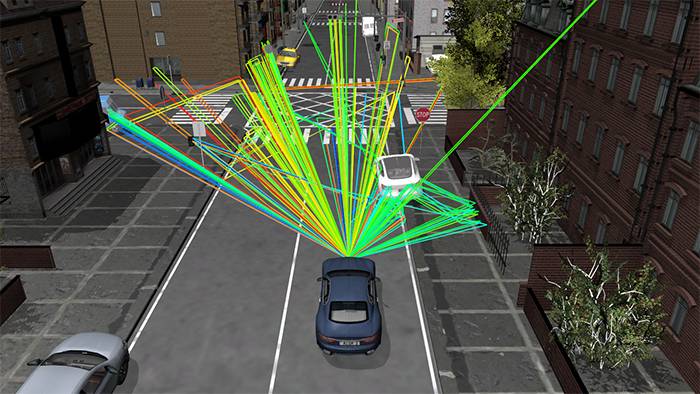Radar Module
Realistic simulation of radar signals
Simulation of the sensor environment based on mathematically formulated physical laws. It allows for injecting radar data into a processing chain in various formats.
The Sensor Simulation products based on MotionDesk can no longer be purchased.
Instead, we offer our new generation of visualization and sensor simulation software: AURELION.
For more information on the product life cycle and the dSPACE product life cycle model in general, please refer to our website.
-
SensorSim 1.1
More realistic sensor simulation and higher performance.
-
AI-in-the-Loop
Presenting a new test system for validating an autonomous, AI-based vehicle using realistic sensor simulation.
Read more
-
Sensor Simulation: Key to Autonomous Driving Development
In this webinar recording dSPACE shows the different dSPACE solutions for sensor simulations: starting from ground truth sensor models to raw data stimulation via GPU-based physical sensor models.
Application Area
The module provides realistic, physics-based simulation of radar signals in a virtual environment with a large variety of configuration options. It is part of Sensor Simulation. The environment simulation is based on raytracing technology. In addition, an API can be used to extend the functionality of the radar simulation for data processing algorithms. By default, two processing templates are shipped with the module. One returns the channel impulse response of the environment as rays that contain information about azimuth angle, elevation angle, distance, and the relative velocity of hit objects. In addition, the reflected electric field is returned as a polarization matrix. The customer can further process this data, e.g., to generate raw-data, such as voltages for the analog digital converters (ADC) of a real sensor.
The other processing template returns a detection list. The radar response of the environment is evaluated and the signals are sorted in an adjustable four-dimensional grid (three spatial and one velocity dimension).
Components and Characteristics
- Real-time capable raytracing for the computation of the environmental model
- Multi-path propagation with a definable number of hops
- Specular reflection
- Diffuse scattering
- Configuration via MotionDesk using a specific GUI
- Positioning and orientation of the sensor
- Radar-specific properties, e.g., frequency, distance and beam characteristics
Drive innovation forward. Always on the pulse of technology development.
Subscribe to our expert knowledge. Learn from our successful project examples. Keep up to date on simulation and validation. Subscribe to/manage dSPACE direct and aerospace & defense now.


